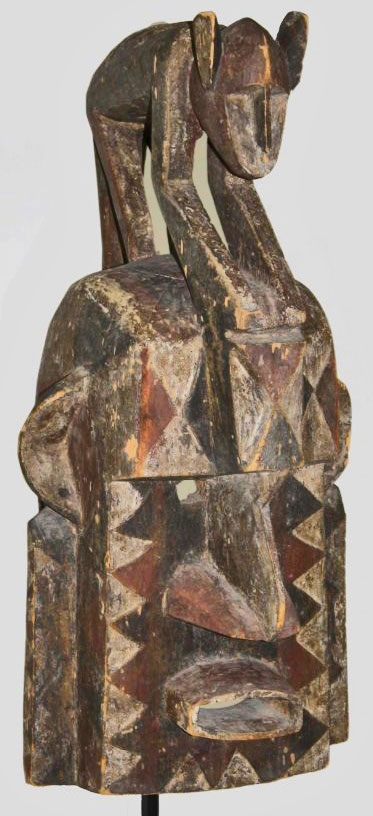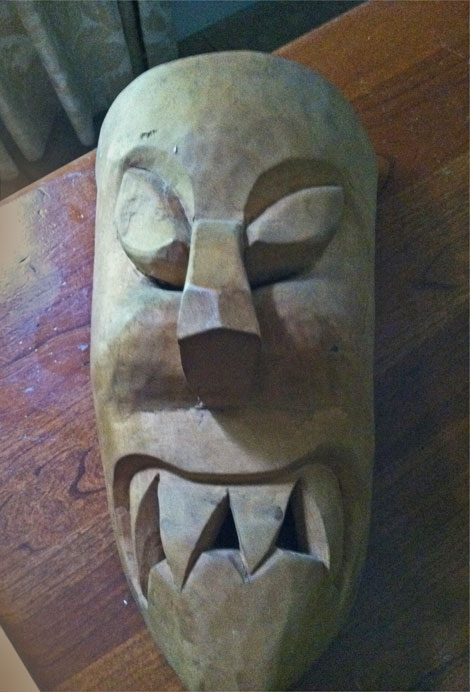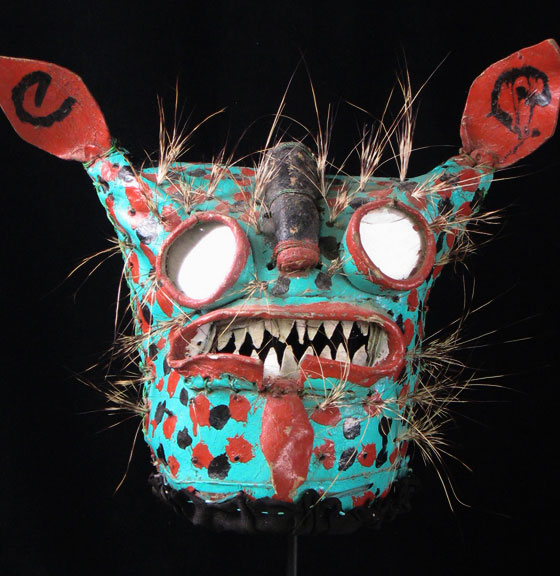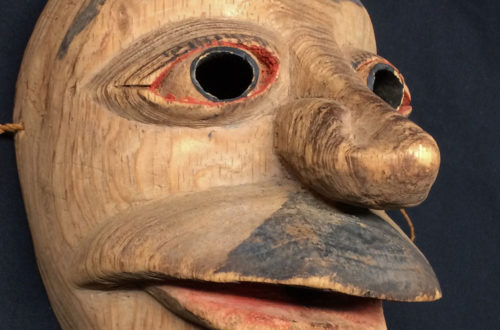
Q: I recently purchased this wooden mast at auction because I found it quite striking. The mask is 24″ tall and was described as an old Songye Congo carved wooden Kifwebe mask with an unusual animal crest. I would greatly appreciate your opinion of the mask and it’s description. Jason, 798
A: It is not a Songye Kifwebe mask. Nor does it resemble the work done by any of the various tribes occupying the Congo basin. The best I can tell you is that it probably was made somewhere in West Africa. It looks old and used, but almost all of the African masks we see on the market have been artificially aged to make them more appealing to the tourist market. I agree that it will look “quite striking” on the wall of someones home or office. Let’s hope one of our readers who is more experienced with African traditional art will help us with a more precise identification.





4 Comments
Aaron
Definitely a Dogon circumcision mask from Mali.
Jason B.
Thank you Aaron. That is extremly helpful information. Do you know if these were made for the trourist trade as well? I am hoping that mine is an authentic tribal piece, having paid a bit more for it than I had planned.
Aaron
It does not look like a tourist mask, but it’s difficult to tell without examining the mask itself. If, when examining the inside of the mask, you see sweat stains where the cheeks and forehead would go, that tends to indicate authenticity.
Ed
Your mask is actually a (very poor) market variant or rendition of a Dogon Monkey Mask. Sorry.
Vetted and genuine Dogon Monkey Masks are indeed rare, and are typically defined with characteristic intent based upon their color pigment of “red”, “black” or “white” archetypes. It certainly is not a circumcision mask. Although sweat can be an indication of use, it is also easily faked, along with many other notions attributed to “usage”.